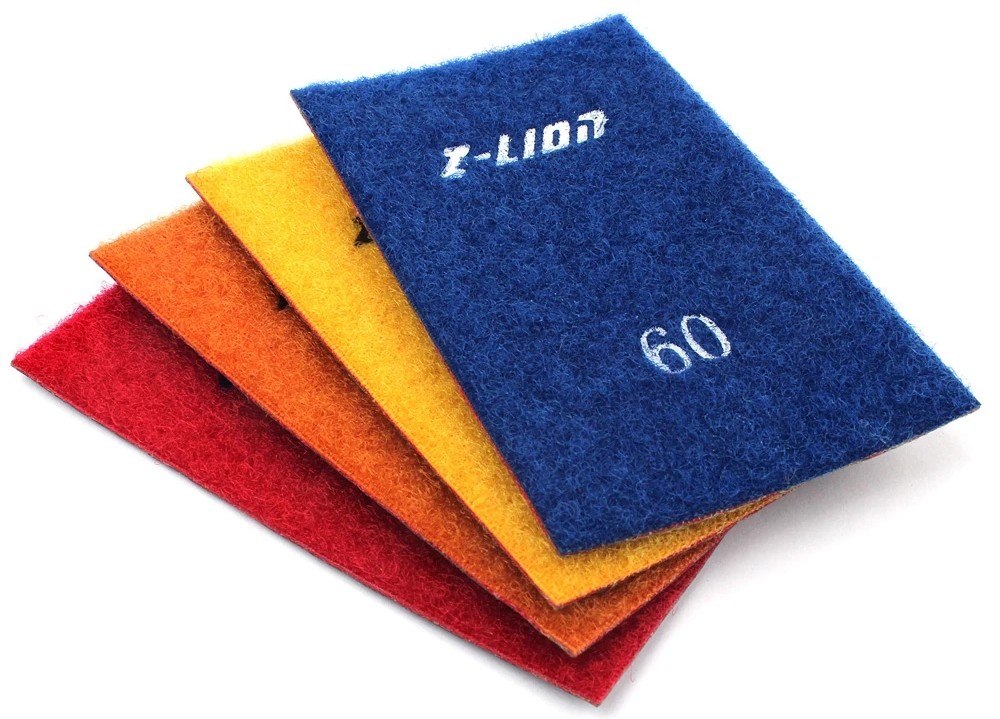
Sandpaper For Marble Polishing
Choosing the right sandpaper for marble is essential to address the surface imperfections of your marble effectively. Marble polishing is a meticulous process that requires choosing the right sandpaper to achieve a smooth, shiny surface.
Choosing the Right Sandpaper
The importance of sandpaper selection:
The first step in marble polishing is choosing the right sandpaper. The choice of sandpaper directly affects the effectiveness of the polishing process and the quality of the final surface. Different sizes of sandpaper, including coarse, medium, and fine sandpaper, are essential to address various imperfections and achieve a smooth and shiny surface.
Sandpaper grits:
Coarse sandpaper (30-60 grit): Coarse sandpaper is primarily used to remove rough areas and obvious stains on marble surfaces, such as scratches and deep stains. When using coarse sandpaper, it is important to apply appropriate pressure and control the duration of sanding to avoid excessive wear on the surface. Coarse sandpaper sets the stage for subsequent polishing stages by addressing prominent imperfections and preparing the surface for further refinement.
Medium sandpaper (No. 80-120): Use medium-grit sandpaper to remove marks left by coarse-grit sandpaper and smooth the surface. It effectively addresses scratches and raised areas that may remain after using coarse sandpaper. Medium sandpaper plays a vital role in refining the surface and preparing it for the final polishing stage.
Fine sandpaper (200-400 grit): Use fine sandpaper to reduce surface imperfections and enhance the overall shine of the marble. It helps make the marble surface smoother and brighter, creating a lustrous and polished effect. When using fine sandpaper, it is important to apply gentle and consistent pressure for best results.
The order of using sandpaper:
In order to achieve the desired polishing effect, sandpaper must be used in the correct order of specifications. Using sandpaper in sequence, from coarse to medium to fine, ensures a systematic approach to addressing imperfections and achieving a smooth, shiny surface.

Steps to Polishing Marble
Polishing marble is a meticulous process that requires precision and attention to detail to achieve a smooth, lustrous surface. From cleaning the surface to applying coarse, medium, and fine sandpaper, each step plays a vital role in refining the marble surface to meet specific smoothness, gloss, and aesthetic requirements.
1. Clean the surface: Before starting the sanding process, the marble surface must be thoroughly cleaned to remove dust, dirt, grease, and other contaminants. Cleaning the surface sets the stage for the sanding process and ensures that the marble is free of any debris that could affect the quality of the finish.
2. Sand with coarse sandpaper: Begin the sanding process with coarse sandpaper, adhering to the specifications of the sandpaper. Pay attention to the intensity and duration of sanding to effectively remove rough areas and obvious stains on the marble surface. Coarse sandpaper sets the stage for subsequent sanding stages by addressing prominent imperfections and preparing the surface for further refinement.
3. Sand with medium sandpaper: After using coarse sandpaper, continue sanding with medium sandpaper. Smooth any marks and raised areas left by the coarse sandpaper to ensure a consistent and even surface. Medium sandpaper plays a vital role in refining the surface and preparing it for the final sanding stage.
4. Sand with fine sandpaper: Use fine sandpaper to reduce surface imperfections and enhance the overall shine of the marble. Use gentle, consistent pressure when using fine-grit sandpaper to avoid leaving excessive sand marks and dents on the surface. Fine sandpaper helps make the marble surface smoother and brighter, creating a shiny and polished effect.
5. Clean the surface: After completing the comprehensive sanding process, the surface must be cleaned to remove any remaining dust and debris. Thoroughly cleaning the surface helps achieve a smooth, flawless surface that enhances the overall appearance and texture of your marble surface.
By following these basic steps for polishing marble, individuals can effectively refine the marble surface to meet specific standards of smoothness, gloss, and beauty. Every step of the sanding process plays a vital role in achieving the best results and ensuring a professional and high-quality result.
Marble Polishing Precautions
1. Controlled Polishing Operation: Marble polishing requires repeated operations, and the time and intensity of polishing must be carefully controlled. Adhering to a controlled polishing operation is critical to achieving a smooth, glossy finish while minimizing the risk of over-polishing or surface damage.
2. Eye and respiratory protection: During the polishing process, it is important to prioritize eye and respiratory safety. Wearing appropriate personal protective equipment, including goggles and masks, can prevent potential hazards associated with polishing, such as dust and airborne particles.
3. Hand preparation before rough grinding: When using coarse sandpaper, it is recommended to manually remove minor imperfections on the marble surface to avoid scratching the surface deeper when using tools. This preparation step helps achieve a smoother, more even sanding process.
4. Use fine sandpaper and the appropriate amount of water: When using fine sandpaper, it is important to avoid excessive use of water to prevent the sandpaper from peeling off and damaging, potentially causing damage to the marble surface. Moderate use of water ensures the effectiveness of fine sandpaper without affecting the integrity of the marble surface.
By adhering to these basic considerations for marble polishing and sanding, individuals can ensure that these complex processes are completed safely, efficiently, and successfully. These operating guidelines and safety precautions are critical to staying safe during the polishing and sanding process, achieving optimal results, and maintaining the quality of your marble surface.
-
Online service
-
Official wechat
account
-
QQ:40933769
-
E-mail:
sales@z-lion.com
Online service
Please feel free to give your inquiry in the form below. We will reply you in 24 hours.

